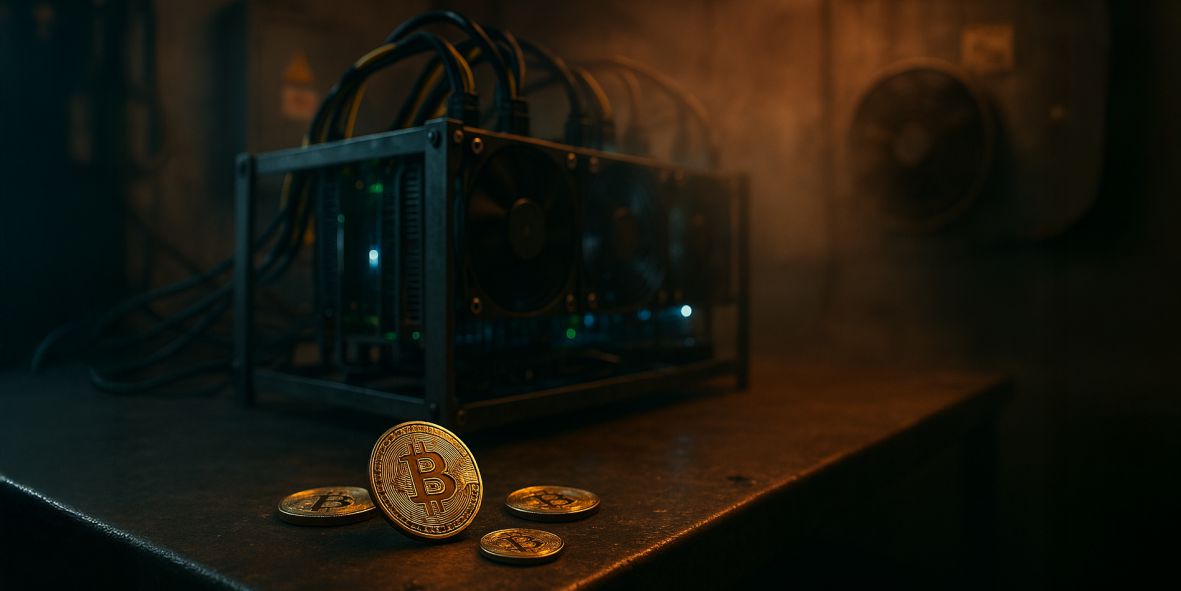Key Takeaways
- Mining Costs Have Surged Sharply: The median cost to mine one Bitcoin (BTC) has increased from $52,000 in Q4 2024 to over $64,000 in Q1 2025, primarily due to higher network hashrate and rising energy prices.
- Bitcoin mining reached its toughest level ever: With a difficulty level of 126.98 trillion, more miners than ever are competing to earn Bitcoin.
- Revenue Pressures Mount with Weak Transaction Fees and Low Hashprice: Hashprice dropped to $52 per petahash (PH/s) before a slight recovery, while transaction fees have fallen below 1% of block rewards in June 2025 — an all-time low. This has further put a strain on the miners.
- Public Miners Are Rapidly Expanding Operations: Major firms, such as MARA, HIVE, and Cipher Mining, are aggressively scaling up their hashrates, with some targeting double-digit growth by Q3 2025. New facilities and hardware acquisitions are driving expansion.
- Adaptability Will Define Future Winners: The post-halving mining landscape demands strategic pivots. Success increasingly depends on evolving into broader digital infrastructure providers rather than relying solely on Bitcoin mining revenues.
Miners Battle for Shrinking Rewards in Post-Halving Era
Bitcoin mining companies face their steepest cost increases in years, with production expenses jumping from $52,000 to over $64,000 per Bitcoin in just six months, according to new industry data.
Mining research firm TheMinerMag reported on June 16 that direct production costs, excluding corporate overhead and interest payments, climbed 23% from $52,000 in the fourth quarter of 2024 to $64,000 in the first quarter of 2025. With network competition intensifying further in the second quarter, costs may exceed $70,000 per Bitcoin.
The surge stems from two critical factors squeezing mining profitability across the industry.
Record Network Competition Drives Up Costs
Bitcoin’s mining difficulty, which measures how hard computers must work to solve the mathematical puzzles that create new Bitcoins, reached an all-time high of 126.98 trillion this month. This system automatically adjusts based on the total computing power dedicated to mining Bitcoin worldwide, known as “hashrate.”
The network’s hashrate reached 913.54 exahashes per second — that’s over 900 quintillion calculations each second, showing just how powerful the system has become. This surge means miners must invest in more powerful equipment to maintain their share of Bitcoin rewards.
Hash price, the revenue miners earn for each unit of computing power they contribute, dropped to $52 per petahash following the latest difficulty adjustment, erasing gains made since early May. The metric has since recovered slightly to $55 per petahash as Bitcoin’s price rebounded above $110,000.
Major Mining Companies Fuel Expansion Race
The recent rise in Bitcoin’s network hashrate has been driven largely by public mining companies scaling and energizing new capacity. Publicly-traded mining companies drove much of this growth. Leading firms such as MARA, CleanSpark, IREN, and Riot have all reported increases in realized hashrate, with MARA posting a 30% jump as its proprietary pool mined a
record number of Bitcoin blocks.
Source: TheMinerMag
HIVE also saw notable growth, boosting its realized hashrate by nearly 32% month-over-month after energizing its Paraguay facility and surpassing the 10 EH/s mark. The company is targeting 11.5 EH/s by the end of June and 18 EH/s by the third quarter’s close. Meanwhile, Bitdeer and Canaan continued to ramp up their deployed hashrate, leveraging their own ASIC hardware.
Cipher Mining purchased additional equipment for its Black Pearl facility in Texas, expecting to increase its hashrate 70% to 23 exahashes over the next few months.
Energy Costs Double Industry Expenses
Rising energy prices compound miners’ challenges. Terawulf reported energy expenses spiked to $0.081 per kilowatt-hour in the first quarter — nearly double the $0.041 per kilowatt-hour from a year earlier.
The median fleet hash cost across tracked companies remained stable at approximately $34 per petahash, though some firms saw costs surge over 25%.
Adding to the pressure, transaction fees, that supplement miners’ block rewards, remained depressed. Fees comprised just 1.3% of block rewards in May and less than 1% in June, potentially setting new record lows.
Mining Stocks Show Diverging Performance
Mining stock performance varied sharply despite Bitcoin’s modest 1.35% monthly gain. IREN led gainers, followed by Core Scientific and Bit Digital, while Canaan and Bitfarms posted losses exceeding 21%.
This decoupling suggests investors increasingly evaluate miners based on revenue diversification and adaptability rather than simply following Bitcoin’s price movements — a shift particularly relevant following Bitcoin’s April halving event, which cut mining rewards in half.
Industry Outlook: Survival of the Most Adaptable
The current environment demands that mining companies evolve beyond their traditional role as Bitcoin extractors. Those successfully pivoting to AI hosting, high-performance computing, and other tech infrastructure services are capturing investor confidence and market share simultaneously.
As the industry approaches a new era amid rising costs and compressed margins, the winners will likely be those who view Bitcoin mining as just one component of a broader digital infrastructure strategy. The days of pure-play mining companies commanding premium valuations appear to be waning.
Read More: IMF Questions Pakistan’s Allocation of Huge Chunk of Energy for Bitcoin Mining







